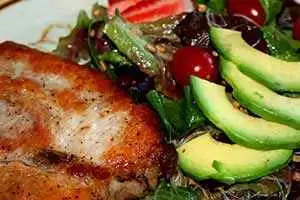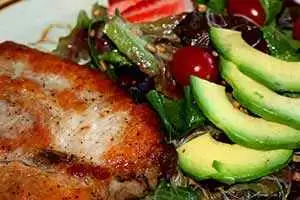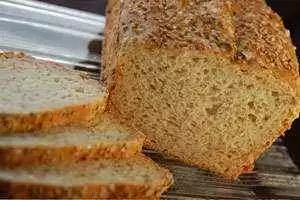
This article originally appeared in the Autumn 2003 edition of Celiac.com's Journal of Gluten-Sensitivity.
Celiac.com 09/17/2014 - The traditional food pyramid of the past shows breads, pasta, rice, cereals (all high in carbohydrates) at the base of the pyramid, the ‘staple’ of the diet. Recently, this assumption has come under attack. Experts are telling us that a diet high in carbohydrates is bad for us (Why is it that the things we love to eat are bad for us?).
Celiac.com Sponsor (A12):
 We consume carbohydrates primarily from grains, fruits, vegetables (including ‘root’ crops such as potatoes), beer, wine, desserts, candies, most milk products (except cheese), and ‘…ose’ foods, such as sucrose, fructose, maltose, etc. Eating an excessive amount of carbohydrates will increase total caloric intake, which may lead to obesity, heart disease and higher blood sugar levels. Consuming too few carbohydrates may lead to an increase in our intake of fats to make up the calories (which also leads to obesity, heart disease and higher blood sugar levels), or malnutrition.
We consume carbohydrates primarily from grains, fruits, vegetables (including ‘root’ crops such as potatoes), beer, wine, desserts, candies, most milk products (except cheese), and ‘…ose’ foods, such as sucrose, fructose, maltose, etc. Eating an excessive amount of carbohydrates will increase total caloric intake, which may lead to obesity, heart disease and higher blood sugar levels. Consuming too few carbohydrates may lead to an increase in our intake of fats to make up the calories (which also leads to obesity, heart disease and higher blood sugar levels), or malnutrition.
Right now, it is considered the “in” thing to be on a low carbohydrate diet. Dr. Atkins has become a household word. The term “fad diet” refers to a diet that will yield rapid weight loss and is like a quick fix for a particular problem. It sells the dream that this time you WILL lose weight and your life will be better. Most diets fail to yield the anticipated results because we set unrealistic expectations of what our bodies can do. The claim of the low carbohydrate diet is that you should adapt this regimen as a permanent way of life, thereby preventing weight-gain in the future.
If carbohydrates are totally eliminated from your diet for a prolonged period of time, your body will become deficient in major nutrients. Fortunately, it is nearly impossible to retain a 100% carbohydrate-free diet, because carbohydrates are found in fruits, vegetables, legumes––nearly everywhere.
Some who follow the Atkins diet feel that it is permissible to consume large quantities of meat and eggs each day, both high in protein, and ignore their cholesterol intake. Over a period of time, this may create other health risks.
That being said, a sensible low-carbohydrate diet has been deemed a healthy one. Americans consume way too much starch and sugar. Diabetics must, of necessity, restrict their sugar and carb intake; the rest of us should follow suit.
Complex carbohydrates provide calories, vitamins, minerals, fiber, and improve your energy level. Therefore, it is wise to replace processed carbohydrates (like bread, pasta, crackers, cereal) with complex carbs, such as the following:
- Apple
- Apricot
- Asparagus
- Broccoli
- Brussels sprouts
- Cauliflower
- Celery
- Cherries
- Cucumber
- Grapefruit
- Green beans
- Green pepper
- Lettuce
- Mushrooms
- Onions
- Plums
- Spinach
- Strawberries
- Tomatoes
- Zucchini
The complex carbohydrates that should be limited if you are following a low- carbohydrate diet are:
- Acorn squash
- Baked beans
- Butternut squash
- Cooked dried beans
- Corn
- Grains
- Hummus
- Peas
- Plantain
- Popcorn
- Potato
- Rice
- Sweet potato
- Yam
So what does a low-carbohydrate diet look like? In the sample menu below, you will notice that ‘toast’ is listed. One slice of ‘healthy’ toast (with flaxseed or sesame seed or other form of fiber) may be beneficial, even on a low-carbohydrate diet.
Breakfast:
1 cup sliced strawberries (sweetened with ½ teaspoon honey) with 1 cup 0.5% milk.
1 hard-boiled egg.
1 slice toast with 1 teaspoon all-fruit jelly.
Lunch:
Salad made with ½ cup shredded lettuce, ¼ cup diced tomato, ¼ cup diced green pepper, ¼ cup diced cucumber, ½ cup broccoli florets, 3 Tablespoons water-packed tuna (drained), 1 Tablespoon gluten-free lowfat Italian dressing.
1 cup fresh cherries for dessert.
Dinner:
4 oz. broiled salmon topped with 1 teaspoon gluten-free low-fat mayonnaise mixed with 1 teaspoon gluten-free Parmesan cheese.
Sliced beets and onion salad.
Zucchini, mushrooms and red peppers sautéed in 1 teaspoon olive oil with Italian seasoning.
Juice-packed diced peaches folded into gluten-free sugar-free orange gelatin for dessert.
A few final hints:
Limit your intake of ‘white’ processed foods, including rice, breads and pastas. If you need a sugar rush, get it from natural sugars—eat an orange or broil half a grapefruit.
Use herbs and shredded cheeses to liven up entrees and vegetable dishes. Read labels, not just for gluten ingredients, but for fat, sugar, sodium, and carbohydrate counts; the lower the numbers, the better it is for you.
Buy foods in their natural state, eliminating processed foods, and vary your menu. If you prepare bland foods or foods you don’t like, you won’t stick to any diet.









Recommended Comments